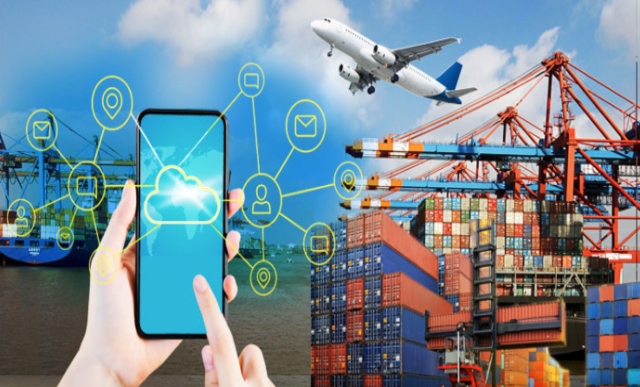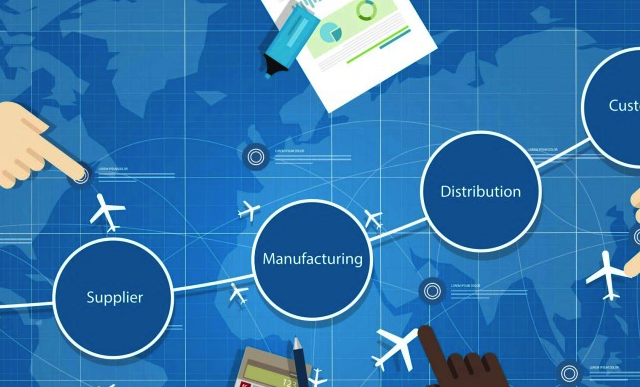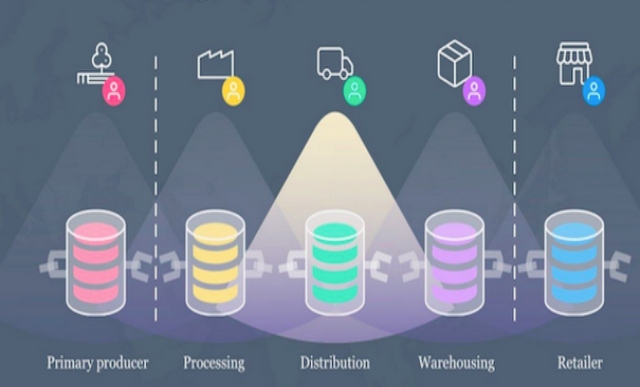Connecting People, Assets, and Processes
How a Digital Supply Chain Leads to a Live Business
A digital supply chain is an integral component of a live business. The needs to become closer to customers, produce individualized products, and reshape business models to capture new and unexpected opportunities all depend on a business having the pulse of its customers’ evolving expectations. To reach this state and deliver on this promise, a business must connect its systems and integrated business networks to its people, its partners, and its physical environment.
Accomplishing this requires more than simply harnessing larger and larger data sets — it requires an effective, strategic use of sensors and connected devices that are driving the rapid adoption of and advancements in Internet of Things (IoT) and Industry 4.0 technologies. It requires understanding that these technologies can fundamentally change complete business models and how people work.
SAP is committed to fostering an atmosphere to help organizations adopt and use these technologies. In September 2016, SAP announced it will invest €2 billion over the next five years to accelerate innovation in its IoT solution portfolio, augment its portfolio with strategic acquisitions, and enhance co-innovation by building out SAP IoT labs around the world where customers and partners can collaborate on research, proofs of concept, and IoT thought leadership activity. And in January 2017, SAP built on this with the announcement of SAP Leonardo, the IoT innovation portfolio.
Explore related questions
The reason for this investment is clear: Smart products and smart devices are accelerating the transition to a full-scale digital and service economy, and organizations need to act sooner rather than later to keep pace with the dramatic change this will have on how business is conducted.
Introducing SAP Leonardo
IoT and Industry 4.0 pacesetters are already reinventing themselves by integrating cognitive learning and intelligent solutions into their business systems, with remarkable results. SAP’s commitment to IoT ensures that more companies will have the same opportunity to create a live business by connecting assets with people and processes. And that commitment grows stronger with the announcement of SAP Leonardo.
SAP Leonardo is SAP’s IoT innovation portfolio that seeks to support the digital supply chain via a shift in focus from things to outcomes. It consists of connected products, assets, fleet, infrastructure, markets, and people, supported by SAP HANA and cloud technology. Uniting these connected items are SAP Leonardo Bridge, which combines real-time information with business processes to improve decision making, and SAP Leonardo IoT foundation, which encompasses business and technical services that collectively process data and provide analytics that help companies get the full value out of IoT. SAP Leonardo IoT for Edge Computing rounds out the portfolio by providing intelligent edge applications right where they are needed, with little to no data latency.
SAP Leonardo reflects a recognition that the impact of IoT and Industry 4.0 technologies will be long-lasting and will permanently affect the business climate. But it doesn’t stop there. SAP partners with other forward-looking cloud and technology innovators to harness the power of IoT and Industry 4.0 solutions. Strategic acquisitions and the spurring of co-innovation with global IoT labs give customers both a platform and an ecosystem of partners with which to perform proofs of concept and help guide them to the rapid adoption of solutions and processes that change the way they run their business.
A Harbinger of Change
There is a misconception today that integrating IoT and Industry 4.0 solutions into an organization is only relevant for a select few industries — such as high tech, manufacturing, or oil and gas — and that everyone else is taking a wait-and-see approach until the landscape settles. But as demonstrated by the way the transportation and hospitality industries have been upended by Uber and Airbnb, the perception that companies can keep chugging along on the same track just because that track has until now turned a profit is misguided.
The reality is that industry upheaval can come anytime and from anywhere. The overall business climate in Japan provides a good example. With an aging population and little immigration into the country, Japanese businesses are bracing for a worker shortage. Strategies to cope with this shortage are evolving. Whereas in the past companies leaned heavily on delayed retirement incentives and overtime packages to retain workers, they are now investing in a much higher degree of end-to-end business automation, exploring self-driving trucks and integrating enhanced logistics automation into the digital supply chain, as one example. Robotics, drones, and other innovative automation solutions and tools not only help to allay the problem of an aging workforce, they also drive greater productivity and efficiency and open new business opportunities that may even have yet to be conceived.
Another example of how new technologies are toppling long-standing business models is 3D printing. Some applications of 3D printing may seem far-fetched — think a chemical company using 3D printers for their products — but this type of innovation is happening today. Companies are leveraging this technology not just as a new way to produce goods, but to change how they market and sell their products.
Tomorrow’s Innovation, Today
All of these trends — a high level of automation, individualized products, and 3D printing — point to an acceleration of digitization in the enterprise. It’s important, then, for companies to examine how to best incorporate new technologies so that they are in line not only with the business as it looks today, but also with its future vision.
In manufacturing, for example, bringing machine learning and artificial intelligence to the production floor can bring benefits that go beyond using machine-to-machine communication to produce on-demand products or to drive predictive maintenance. Machine learning can change the very nature of manufacturing: Does there still need to be pre-defined routing for a manufacturing plant, for instance, or can machine learning influence parts instruction in completely new patterns? Transitioning manufacturing from an outsourcing model to a distributed environment, where production approaches a one-to-one consumer relationship, will have a tremendous impact on the digital supply chain.
This in turn will affect how people work. With end-to-end connectivity and automation comes a much higher volume of data. Connected devices, sensor technology, and external data such as traffic, weather, and social data all provide the business with signals. For end users, transforming these signals into insights entails far more than using static reports and spreadsheets, or picking up the telephone to ask a warehouse manager about a specific order. Enhanced automation and connectivity enables a workforce to anticipate issues and solve potential problems before they arise, and drives home the importance of machine learning to a live environment in which predictive analytics plays an important role.
Going Forward in a Live Environment
A live environment is a major step forward and, as we can see, it can disrupt many preconceived notions people may have about what it means to fulfill a purchase order, stock inventory, produce a part, or sell a product. As consumers of 21st-century technology, your customers experience this kind of a live environment in untold ways; apparel can now double as a health tracking system, after all. These types of breakthroughs are occurring everywhere we look, and SAP’s IoT efforts, headlined by SAP Leonardo, will help our customers stay ahead of the game to win today’s savvy consumers.




